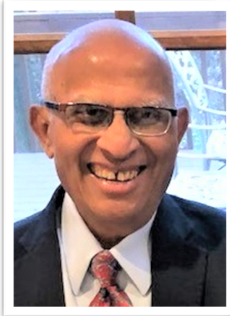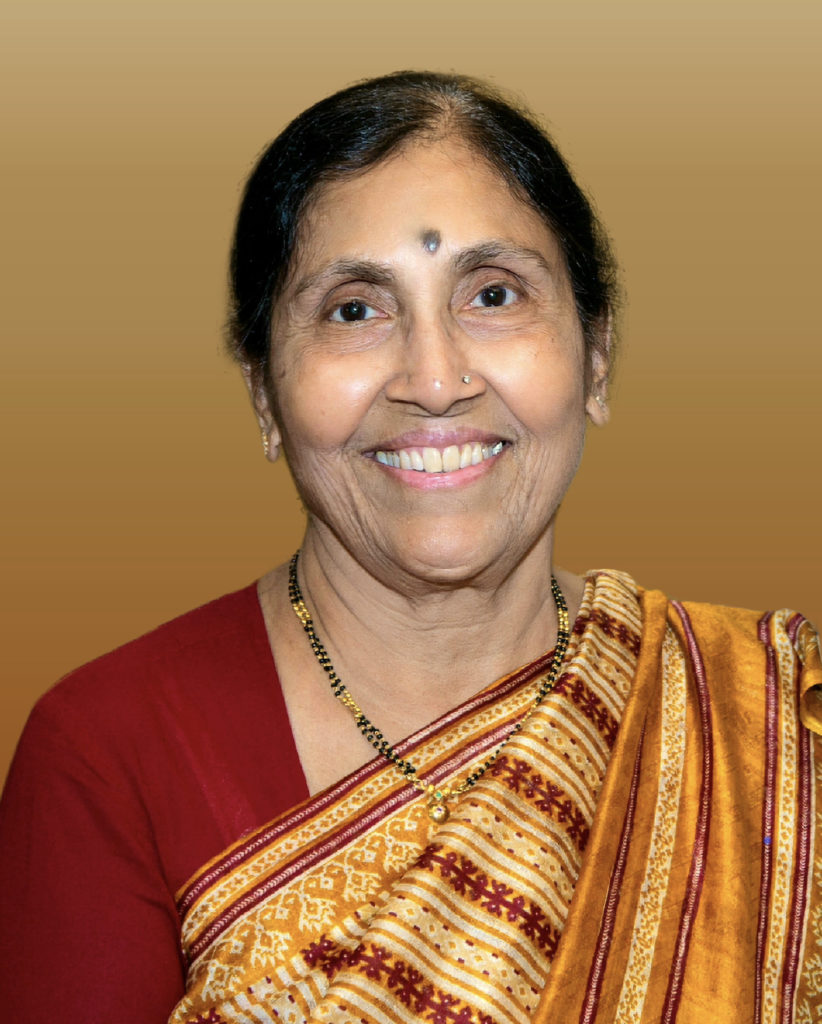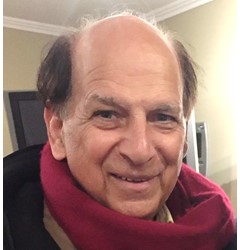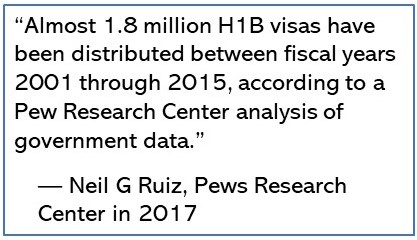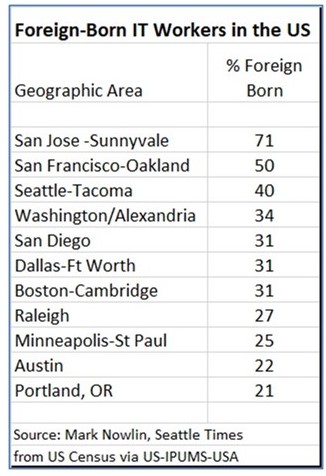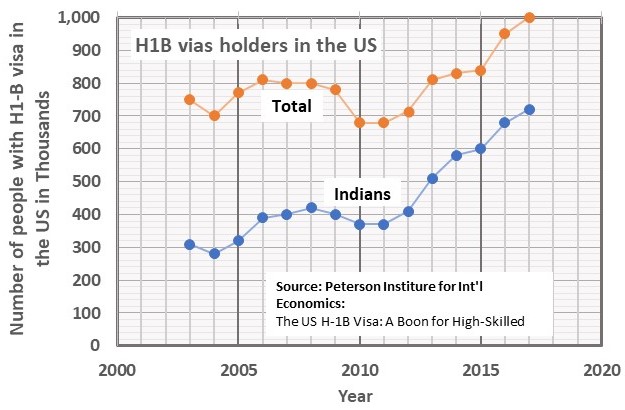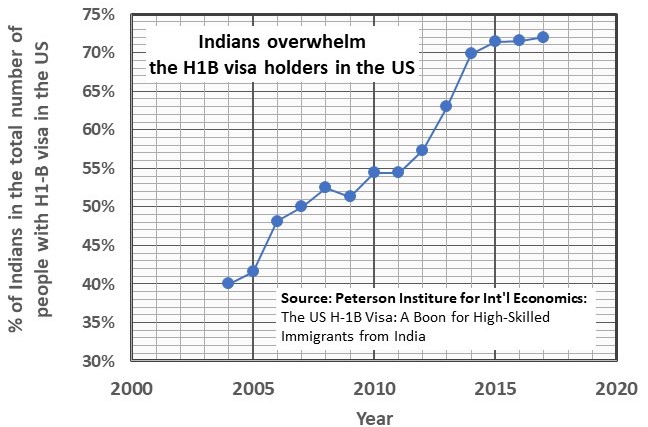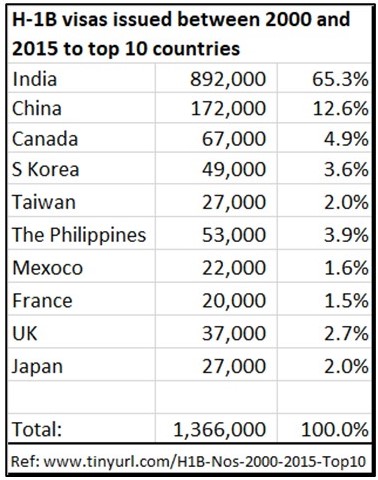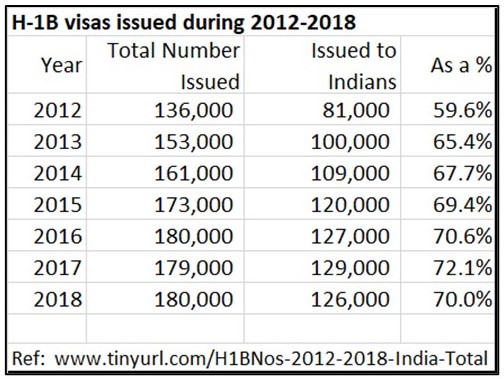Archive for category April 2023
Obituary: Vinod B Doshi, Beloved Husband, Cherished Father & Grandfather, Distinguished Engineer and Founding Member of the Hindu-Jain Temple (1936 to December 11, 2022)
Posted by admin in April 2023, Past issues on March 30, 2023
Vinod B. Doshi, age 86, our father, passed away peacefully on Sunday, December 11, 2022, surrounded by his loving family. He was 86. He was born in Calcutta, India, on October 8, 1936 the older of two children to the late Shri Babulal and Smt. Chabalben Doshi.
He and his late wife and our mother Indu were married for 52 years and the proud parents of three children and six grandchildren: Anita Doshi Carleton (son-in-law Dennis, grandchildren Neil and Kellen); Salil Vinod Doshi (daughter-in-law Bijal, grandchildren Shay and Reveen); and Nisha Doshi Westerman (son-in-law David, grandchildren Pria and Cole).
He graduated from the most prestigious engineering college in India, the Indian Institute of Technology, and he enjoyed a rewarding career at Westinghouse and Siemens designing power generation systems and was an inventor on many patents. He was passionate about the Indian community in Pittsburgh and was instrumental in its growth, serving as a founding member of the Hindu-Jain Temple.
He was the president of the Jain Society of Pittsburgh, co-convener of the JAINA Convention in Pittsburgh, active in JAINA (Federation of Jain Associations in North America), and instrumental in establishing the Gujarati Samaj in Pittsburgh.
He enjoyed travel all across the globe with his wife, children, and friends over the years. He loved passionately cheering for the Pittsburgh Steelers, Penguins, and Pirates.
A traditional Jain Funeral Service was held for our father on Sunday, December 18 at the Beinhauer Funeral Home in Dormont, PA. Pandit Suresh Chandra Joshi from the Hindu-Jain Temple guided our family with the Jain cremation rites. After the funeral service, a Celebration of Life Luncheon was held at the Hindu-Jain Temple Hall. ∎
Obituary: Vijaya Rao, An Affable Early Indian Immigrant and Silent Volunteer at the S.V.Temple (1942 to February 19, 2023)
Posted by admin in April 2023, Past issues on March 30, 2023
Vijaya B Rao, a long-time resident in our area, wife of the late Raja B Rao, of Penn Hills, PA passed away peacefully on Sunday February 19, 2023 with her loving family by her side. She lived in Penn Hills for decades before moving into hospice care towards the end.
Vijaya came to this country in 1967 along with her husband Raja Rao, who was teaching statistics at the University of Pittsburgh, and young son. She and her husband were able to create a lively life for themselves and their two children. They always kept their faith and roots to India very close to their heart.
In 1976 when the concept of a Venkataswara temple was first mooted by their friends, Vijaya and Raja Rao were quite excited to join the cause. The temple became a community they immersed themselves in. It became for them a home away from their home in India. She and her husband were long time members of the temple where they spent countless hours as devotees and volunteers. They took keen interest in the music and dance programs organized at the temple in those early years.
Vijaya also enjoyed spending time with her family and friends. She was well known among her friends as an excellent cook and a reliable friend. She also enjoyed playing with her dog grandchildren, Cody, Ellie, Lucy & Coco.
At the request of Vijaya, her family conducted a private funeral and cremation ceremony following Hindu traditions at the Beinhauer Funeral Home on West Liberty Ave, Dormont.
Left to cherish Vijaya’s memory are her son Harish Rao, his wife Swati of Dallas, Texas; her daughter SriDevi Rao James and her husband Mark James of Oakdale, Pennsylvania; and her grandsons Anish and Anjay Rao and her granddaughter Taylor James as well as several nieces and nephews here and in India. After the death of her husband Raja B Rao in 2001, she lived independently with the continuous support of her daughter Sridevi, who is in the nursing profession.
A special thanks to the Celebration Villas and Bridges Hospice as well as her close friends who provided excellent care and her favorite Indian dishes. — By a friend of Vijaya Rao ∎
Montessori Pre-School in Monroeville Helps Children to Naturally Acquire Learning Skills
Posted by admin in April 2023, Past issues on March 30, 2023
By Sandra Durkin, Mars, PA
Editor’s Note: Ms. Sandra Durkin is a 28-year veteran consultant in early childhood education. Her background has been in psychology (LaRoche University) and American Montessori Society’s Early Childhood Teaching (Carlow University). With Pennsylvania Teaching Certification and active participation in several leadership programs, Sandra owned and ran the state-licensed Garden Montessori School in Cranberry Township from 1999-2020 with 65 children, offering extended care, enrichment camps, Spanish, and summer camps.
Keystone Montessori School in Plum Boro has been offering multi-age Montessori programs in the Monroeville area for over fifteen years, serving children from ages twenty months through kindergarten. Three age groupings in the school enable each child to stay with the same teacher, with the academic year running from September through May, and half-day camps continuing through the summer. The school is located at 3245 Old Frankstown Road, Plum, close to Business 22 and the PA Turnpike.
Owner-Administrator Linda Franke has designed the Montessori program with adequate resources at her school to meet the needs of the children, as well as the needs of families. Her lifelong work and commitment to Montessori education is summed up by her favorite quote: “Teach children to learn to do it by themselves.”
When children begin this unique experience at twenty months, they are eager for independence, and the PROCESS of learning gets instilled in a natural learning environment. They seek more challenges, observing and learning from older children.
Keystone classrooms offer several carefully selected hands-on activities for each child to build a foundation for concrete learning. Dr. Montessori’s famous quote “The hand is the teacher of the mind” is an all-encompassing summary of the core of the philosophy at Linda’s school. Montessori believed that the most important period of learning occurs from birth to age six through the “Absorbent Mind,” what people often refer to as children being like “sponges.”
The environment at the Keystone School utilizes activities in practical life, sensorial experiences, language, phonics, math, and geography, with certified Montessori teachers designing the enticing activities, increasing in difficulty with each step. The children actively engage in worldwide cultural experiences through participation of multicultural families of the children in the school.
Children progress individually at their own pace, based on their natural instincts, and skills they develop and master in the class room. The older children can teach, lead, and serve as role models, which increases their self-esteem and confidence.
The Keystone Montessori School offers Peace Education and conflict resolution in its curriculum, incorporating the “Peace Rose” and daily practice of the virtues of good behavior. The children demonstrate their understanding polite interactions with their peers in the class.
Feel free to contact Linda Franke at Keystone Montessori School for more information and enrollment opportunities at:
The Keystone Montessori School
3245 Old Frankstown Rd., Plum, PA
www.KeystoneMontessoriPGH.com
keystonemontessori@gmail.com Landline: 724-733-1015 ∎
Obituary: Manjula Germanwala, A Dedicated Volunteer, an Optimist with Passion for Books (1945 to December 17, 2022)
Posted by admin in April 2023, Past issues on March 30, 2023
By Shambhavi Desai, Bridgeville, PA
Manjula V. Germanwala, a resident of Pittsburgh for over fifty years and a well-known name in the community, died on December 17, 2022, with her loving husband, Vasant, at her side. Manju-ben, as many of us called her, was born on January 29, 1945 in Worli, Mumbai to Savita and Mulchand Kansara in an affluent family. Youngest among all her siblings, she was bold, intelligent, caring, spiritual and gracious inside out. She did her schooling and started her college education in Mumbai. Manju-ben was engaged to Vasant Germanwala in 1963 and they were married in 1967 after coming to the US. They were married for 55 years.
While raising her family here, Manju-ben, with full support from her husband, graduated from Point Park College with a degree in microbiology. Her passion for reading and books led her to work at B. Dalton Booksellers at the Parkway Center Mall for eighteen years, where she became the manager of the store. Later, she worked as an administrative assistant at the Greentree Medical Associates for seven years before retiring in 2006.
Manju-ben was active in several organizations: a devout member of the Hindu Jain Temple and the Chinmaya Mission Pittsburgh, a volunteer at the Alliance for Humanitarian Initiatives, Nonviolence, and Spiritual Advancement (AHINSA), and at the Sai Family of Pittsburgh.
An exemplary leader, community activist, and a committed volunteer, she (with her husband Vasant) gave time for over forty years to several organizations including Meals on Wheels (www.mealsonwheelsamerica.org), delivering meals to senior citizens, who often live alone. She was also at the Kiwanis Club of Pittsburgh, and Beginning with Books, an organization of experts dedicated to nurture literacy among pre-school children, running workshops on early literacy topics to parents, teachers, and caregivers.
Her husband Vasant lovingly recalls, “She would always try her best to keep a positive attitude even in the most adverse situations.” Manju-ben’s passion was music. I vividly remember her singing with great zeal, not only bhajans but also an old Hindi movie classic, Afsana Likh Rahi Hun…, as the senior most contestant at Tarana, a music event organized jointly by the Gujarati Samaj of Greater Pittsburgh and the Maharashtra Mandal of Pittsburgh in 2007.
Manjuben is survived by her husband, Vasant Germanwala; her older son, Samir, daughter-in-law, Gana, and their children, Arya and Alec; and her younger son, Anand, daughter-in-law, Arpita, and their children Atasi and Anika. Her Hindu cremation was at the Beinhauer Funeral Home on Wednesday, December 21, 2022, with Pandit Sureshchandra Joshi helping her family with the cremation rites. Her friends will always remember Manju-ben as the selfless person that she truly was, for all the volunteer work she did for the community and her infectious smile with a twinkle in her eye. ∎
My First Chinese HotPot Dinner
Posted by admin in April 2023, Past issues on March 30, 2023
European formal dinners follow dress codes and a system of what course follows which one and the array of silverware to eat the dishes.
Presentation, visual appeal of the meal, and the ambience, not to speak of the company we share the meals with, are as important as the variety and taste of the dishes served.
In the Middle East a shared plate fosters clan unity and cohesion. In the Sikh Gurudwara communal eating during the langar meal is an important part of their worship. Japanese platters are as decorative as they are appetizing, complementing colors and shapes with the taste of the dishes. Dramatic hibachi-made food conveys all the essence of a drama, with the chef posing as a Samurai warrior cutting meats and vegetables following strict protocols for the sizes and shapes, while showing off his dexterity with the ultra-sharp knife and forks.
In traditional wedding dinners in South India, even today there is an elaborate scheme for placing the different items on banana leaves. Each item — like salt, achars, banana chips, pappads, curries, dal items, raithas, and payasams (kheers), and cooked rice — in the sadhya (banquet) has a specific spot on the banana leaf layout. And you can start eating only when everybody’s banana leaf is served with all the items. Further, each item in the banquet, like sambaar, moru-koottan (similar to the North Indian kadi) rasam, and paayasams come in a specific sequence. Today’s buffet-style Indian wedding dinners with people filling their 10” dia plates with all items in one go and in one heap would be considered uncouth and barbarian.
In Chinese banquets, groups of people sit around a circular table ordering 10 to 20 items placed on a slowly rotating carousel in the middle. People take their seats following a strict hierarchy. As the items in large plates come to you on the slowly rotating carousel, using chopsticks, you pick whatever you like onto your eating bowl/plate.
The Chinese HotPot, whose history goes back over one thousand years, is another setup for sharing a meal in homes and in restaurants. The HotPot indulges and encourages the inner chef in you to mix and match and make your own very light broth, with your own combination of sauces and toppings. You thus create an aromatic, flavorful, spicy, and steaming hot mix in a large vessel kept right in front of you on the dinner table.
Then you add your choices of meats, vegetables, and noodles into the steaming hot broth and cook them till it is done. Everybody at the dinner table then helps themselves with the broth and the items they cooked into a smaller bowl and eat them slowly. Pre-made appetizers are served first.
I had heard of this cuisine from many but had not sampled it myself. We were in New York City during the Chinese New Year this January. We went to Chinatown for the festivities and completed it with a HotPot lunch on a cold winter day.
The menu card looked complicated with a wide array of meats, vegetables, noodles, and appetizers to choose from. First we decided on the most important item — the broth we would use to cook our chosen items. With a lot of help from our grandkids, who have already had the HotPot meals and loved them, we made our selections. We chose Sriracha-flavored broths with minced ginger and garlic and soy sauces. Then we were lead to a buffet with an array of toppings and sauces to mix and match to add to our broth. Some I recognized like Hoisin sauce and Sriracha but encountered some that I had not heard of. I made a selection of it on a plate and seated myself ready for the meal.
The waitress arrived with platters and platters of the items our family had chosen to add to the broth. So many vegetables, greens, meat slices, appetizers like tiny egg rolls, wontons, not to mention a variety of noodles.
Soon she turned on the induction heaters installed in the middle of the table with a range of options — simmer, low and medium heat, and boil at a typical HotPot dinner table — and placed large mixing bowls in the heater. She poured the steaming broths from kettles into the mixing bowls. We then added the vegetables and other items into the hot steaming broth and let them simmer and cook right in front of our eyes — we were our own cooks, sort of.
We were given small individual bowls to ladle out the steaming broth and cooked veggies into our bowls; after adding it with our thick sauce mix and toppings, the resulting uniquely concocted one-of-a-kind dish was ready to quell our appetite. Since it was flavorful and piping hot, it was a treat for our senses and so satisfying for a cold day outside. And it surely opened up our sinuses.
The waiter replenished the light broth as we emptied and we ate the vegetables and drank the light broth (much like the traditional south Indian rasam) to our hearts’ content. But much like eating the Vietnamese Pho, the HotPot meal filled us up with mostly water and vegetables. It was wholesome and satisfying.
Verily, this way of serving food is amazing in our times. A low-cal meal with healthy ingredients and minimum fat, at the same time flavorful, tasty, and spicy and satisfying to our palate. It is a rare combination.
Most big cities in North America have several HotPot restaurants Pittsburgh too has a few HotPot restaurants for you to explore, around the city and in Oakland.
If you are adventurous, you can easily setup your own HotPot dinner table for 4 to 6 people in your homes: the tabletop portable induction heater shown here is under $100, and a few other simple vessels and bowls. You can select all the Indian, Thai, and Italian spices and herbs you want to create your own one-of-a-kind broth create with your own array of green vegetables, roots, tofu, mushrooms, vadis, and noodles and meats (if you want)… And enjoy your HotPot dinner with your friends, with a glass of wine or a bottle of beer. ∎
Be Like A Sun!
Posted by admin in April 2023, Past issues on March 30, 2023
Juginder Luthra, Weirton, W
……
……..
……..
……………….
…………………………..
…………………………….
………………………………
Illuminate whatever you touch
Be a giver, receivers misery too much
Your light free for all, seek nothing back
Recipients circle spin, keep coming back
Give life to others, unaffected by them
They use or misuse not for you to judge
Others may take you for granted
Keep glowing even if feel unwanted
You were born to shine, stay detached
Spend days giving, no strings attached
Be not proud of your bright rays
One who made you gave limited days
So my daughter and my son
Stay bright and giving like a sun
Be a sun ∎
Boom-Bust Cycles Are Typical in the US Economy
Posted by admin in April 2023, Past issues on March 18, 2023
For all the gloss the IT industry uses to describe itself, the response of its American CEOs during the system-wide layoffs were trite and very unoriginal. Unlike their muscular CEO brethren in the steel and auto industry, whose decline several decades ago wiped out hundreds thousands of muscular blue-collar jobs, these IT CEOs were contrite and apologetic. Using copycat vapid phrases for not assessing the situation correctly, they took personal responsibility for the layoffs.
It was ironic that these IT industry giants, as they themselves claimed, had all the software tools for gathering the needed data to predict the future under different scenarios to advise their clients for making business decisions and improving productivity, of course, using their expensive consulting services. This reminded me of a colloquial Tamil proverb,
meaning, “The teacher’s son is an idiot and the doctor’s son is sick.” Or more to the present context,
meaning, “The teacher himself is dumb and the doctor himself is sick.”
Many companies offered expanded severance packages to their laid off employees to lessen the pain. Often, these companies also employ large number of TVCs [temps, vendors, and contractors] working on their campuses. But these TVCs are not covered for the severance package since they are not in the companies’ payroll.
Here are contrite, unoriginal e-mails from the CEOs of IT giants, as if they copied from each other explaining the layoffs to those who they fired:
Sundar Pitchai CEO of Alphabet, which owns Google:
Googlers:
I have some difficult news to share. We’ve decided to reduce our workforce by approximately 12,000 roles. We’ve already sent a separate email to employees in the US who are affected… …
This will mean saying goodbye to some incredibly talented people we worked hard to hire and have loved working with. I’m deeply sorry for that. The fact that these changes will impact the lives of Googlers weighs heavily on me, and I take full responsibility for the decisions that led us here.
Over the past two years we’ve seen periods of dramatic growth. To match and fuel that growth, we hired for a different economic reality than the one we face today.
… … To fully capture it, we’ll need to make tough choices… … While this transition won’t be easy, we’re going to support employees as they look for their next opportunity.
Satya Nadella, Microsoft:
… … We’re living through times of significant change, and as I meet with customers and partners, a few things are clear. First, as we saw customers accelerate their digital spend during the pandemic… [now they want] digital spend to do more with less. We’re also seeing … parts of the world are in a recession and other parts are anticipating one… [and] the next major wave of computing is being born with advances in AI…
This is the context in which we as a company must strive to deliver results…[requiring] us to take actions grounded in three priorities.
First, we will align our cost structure with our revenue … result[ing] in the reduction of our overall workforce by 10,000 jobs through the end of 2023. This represents less than 5 percent of our total employee base… … We know this is a challenging time for each person impacted. The senior leadership team and I are committed that we go through this process in the most thoughtful and transparent way possible.
… [W]e will treat our people with dignity and respect, and act transparently. These decisions are difficult, but necessary. They are especially difficult because they impact people and people’s lives – our colleagues and friends… U.S.-benefit-eligible employees, will receive a variety of benefits, including above-market severance pay, continuing healthcare coverage for six months, continued vesting of stock awards for six months, career transition services…
Zuckerberg, FaceBook:
Today I’m sharing some of the most difficult changes we’ve made in Meta’s history. I’ve decided to reduce the size of our team by about 13% and let more than 11,000 of our talented employees go. We are also taking a number of additional steps to become a leaner and more efficient company by cutting discretionary spending and extending our hiring freeze through Q1.
I want to take accountability for these decisions and for how we got here. I know this is tough for everyone, and I’m especially sorry to those impacted…
https://www.heartandbustle.com/At the start of Covid, the world rapidly moved online and the surge of e-commerce led to outsized revenue growth. Many people predicted this would be a permanent acceleration that would continue even after the pandemic ended. I did too, so I made the decision to significantly increase our investments. Unfortunately, this did not play out the way I expected. … [and] our revenue [was] much lower than I’d expected. I got this wrong, and I take responsibility for that.
Elon Musk, Twitter:
Elon Musk’s Twitter cut 50% of the company’s workforce, including its contractors. He tweeted his sympathies: “Folks at Twitter past and present are strong and resilient. They will always find a way no matter how difficult the moment. I realize many are angry with me. I own the responsibility for why everyone is in this situation: I grew the company size too quickly. I apologize for that.”
Niraj Shah, Wayfair:
Last August, furniture retailer Wayfair said it would let go of 900 people, or about 5% of its workforce. In a published letter, CEO Niraj Shah wrote: “Over the past few years, we’ve grown Wayfair significantly to keep pace with the e-commerce growth in the home category. We were seeing the tailwinds of the pandemic accelerate the adoption of e-commerce shopping, and I personally pushed hard to hire a strong team to support that growth. This year, that growth has not materialized as we had anticipated. Our team is too large for the environment we are now in, and unfortunately we need to adjust… I take responsibility for the impact this decision will have on the nearly 900 Wayfairians who will be told today they are no longer a part of building our company’s future.”
Are these systemic layoffs anything new for American businesses? No. These are familiar for those who lived through earlier gut-wrenching transitions in our own times caused by self-inflicted wounds. During the 1970s when the steel industry died in the US, tens of thousands lost their jobs, causing a deep decline of many towns and cities (like Pittsburgh) in the Rust Belt.
Later, the American auto industry declined seriously only to reinvent itself copying the Japanese, after ridiculing the same Japanese compact fuel-efficient cars. The closing down of the full-fledged automobile plants in rural American towns turned them into graveyards.
The S&L bailout followed, and when the real estate bubble burst, many ended up owning huge mortgages on homes that lost their market values. In the wake of the Y2K, tens of thousands of Indian IT temp workers all across the US were dumped on the streets. The Dot.com bubble burst was the next with huge job losses. Then in the Wall Street melt down in 2008 job losses were in the millions across the board in the US.
Even NASA was not spared in the boom-bust cycle. Hundreds of thousands of people were employed in the 1960s directly by NASA and indirectly by subcontractors making components needed for the moon mission. After the Moon landing when an American Stars & Stripes was planted on the Moon, NASA had to shrink and tens of thousands of employees were let go. Again, when the US Congress stopped the space shuttle program in 2011, NASA laid off thousands of skilled engineers and technicians.
The latest IT layoffs are only following this pattern of what American businesses go through: incubation and euphoria on new businesses and technologies with speculators jumping into the fray ushering in explosive growths of a whole new industry. Innovators become icons, only to see their innovative and avant garde businesses becoming one more “mature” and “regular” corporation needing run-of-the-mill managers, bean counters, and lawyers, HR & PR folks to manage the layoffs.
This boom-bust cycle has been common in the US since the early days of its industrialization in railroad, banking, gold and copper mining in the Western States, and drilling for oil and natural gas. In this template, the American Dream is fulfilled for those who succeed, and the American Nightmare unfolds for those who struggle to barely survive, with many succumbing along the way. History is replete with these stories in many books for those who care to know.
Every society has its own culture, irrespective of the constitutional and legal framework in which it operates. If the society is large enough in land mass (as the US is), or complex enough (as India is), it also has subcultures within the big umbrella.
How many Indian IT companies spend their time and resources educating their employees on their business, and the cultural backdrops of their clients in different countries to which they depute their employees?
And how many Indian IT companies manage their risks by diversifying their market segments in Central & South America, Africa, the Persian Gulf countries, Southeast & East Asia? And in the huge Indian domestic market in the small and medium industries and retailers in second and third tier cities? These market segments will NOT give them 20 to 30 percent annual growths. But they will certainly help them to spread the risk to mange the economic downturns and wean them away from over-dependence on the industrialized West, as seems to be the case now.
And how many university-educated Indian IT professionals care to study the industrial and cultural history of different countries in their career expeditions all across the globe? After all, these tech-savvy youngsters have access to all kinds of information literally on their fingertips when they sit in front of their PCs with internet connections. ∎
The IT Layoffs Hit Indians Hard, But Was Inevitable, Even Predictable
Posted by admin in April 2023, Past issues on March 18, 2023
The IT sector in the US saw explosive growth in the last two decades. Flagship IT companies — Amazon, Google, Microsoft, Meta, and others — employed Indian “techies” in large numbers, most on the H-1B visa. A look at the H-1B visa numbers summarized in the tables and plots in this article reveals how extensively Indians have flooded the IT jobs all across the US.
Simultaneously, people in the know have been warning that the IT sector globally is ready for a major correction and upgrade through Artificial Intelligence (AI). The self-learning AI, they said, will eliminate repetitive low-skill jobs across all sectors, including in IT, the jobs that can be done by software and computer-aided machines. In addition, in the history of the US economy, boom-bust cycles have been a common theme.
So, if we put all these together, as you will see below, the on-going large-scale layoffs in the IT sector was something that was waiting to happen. And when it did indeed happen starting from July 2022, it was inevitable that Indians were the most affected. One is tempted to say, Indians were walking — worse still, sleep-walking — into this maelstrom.
The IT industry described itself using fancy adjectives to embellish its attributes — pathbreaking, revolutionizing, life-altering, 21-st century phenom, futuristic, mind blowing, dizzying… Soon a lifestyle evolved around this phenom: casual dress, company-paid fancy food platters, laundromats and gyms at workplaces. Even 3-week paid vacation days was not unheard of. Workplaces and office parks became campuses.
With IT jobs aplenty and not enough employees to hire from within the US, companies went on a hiring spree bringing workers from overseas, even raiding other companies, for employees. A 2018 story in the Seattle Times reported that foreign-born IT workers in the Seattle area accounted 40% of the total of 143,000 employees. In the San Jose area in California, over 70% of IT workers are foreign-born.
In India, IT workers have been enjoying ever increasing salaries and benefits, with weekend haunts to Goa, Malaysia, Sri Lanka, Thailand, Mauritius becoming the norm.
To meet this demand, universities started offering majors and minors in Data Analytics, Managing Information Technology, e-Commerce, Web Applications, Data Mining… They organized events bringing together graduating IT students and hiring managers/venture capitalists for link ups. IT students with exotic ideas and venture capitalists flush with cash were hovering around each other, as in mixer dancing, to create the next trailblazing startup.
With startups and new IPOs and their acquisition by the industry Big Boys, these were heady days, and the ambience dizzy for the 20-somethings!! Even through the Covid pandemic, the IT sector saw a boom because of the growth of e-commerce. With people working from home, business in home-office furniture and gadgets saw a spurt while sales in undergarments saw a decline.
For ambitious students — and their parents — in India, their career choices were cutout for them: degrees and trade certificates in computer-related fields, followed by a 3-semester master’s program in India — better still, in US universities — that would lead to prized IT jobs. Graduating students walked into Google, Microsoft, FaceBook, Amazon and other lesser-known companies in the US with exotic names, all on the temporary H-1B visas. They wanted jobs in the Bay Area, Seattle, LA, or New York City, Boston. Austin, Atlanta, the DC area… … Jobs in Little Rock, Ark or Birmingham, Ala were punishments.
Alarmed at the American IT industry’s appetite for hiring people from overseas (which also helped the industry to keep salaries low), the federal government capped the number of IT-related overseas hires at 65,000 per year for people with bachelor’s degrees, and 20,000 per year for people with US-earned master’s degrees under the H-1B visa regime. Indians started flooding this employment market, gobbling up around 75% of the 85,000 H-1B visas for 2020 and 2021. A look at the plots and tables on these pages tells how Indians have been overwhelming the H-1B visa system — and how Indians eventually got trapped into H-1B net.
With Indians applying for the H-1B visas in numbers far, far exceeding the allotted cap, the US consular offices in India resorted to a lottery system to pick applicants for H-1B visas. In this milieu, everybody was taking advantage of everybody else, and not everything was kosher or Shudh, or halal both from the employers’ and the employees’s end.
As experts predicted, starting in late 2022, American IT companies have used the post-Pandemic global recession and laid off over 200,000 tech employees so far. Not many of these jobs will come back because these companies have been readying themselves to launch AI platforms for many routine IT tasks. It was therefore inevitable, and also entirely predictable that Indians on H-1B visas are the largest number laid off.
The Big Picture to contextualize the problem: Even though the IT industry is critical to the American economy, as Forbes magazine (December 18, 2022), reported, the tech sector is a small part of the US workforce, accounting for only 2% of the 150 million workers.
Besides, the recent layoffs of tens of thousands of IT employees from the Big Boys in the industry — FaceBook, IBM, Google, Microsoft, Cisco, among others — are between 5 to 10 percent of their workforce, small in relative terms.
Also, while the tech sector layoffs are getting wide media coverage here (and wider coverage in the Indian media), the overall unemployment rate in the US is still as low as it has ever been in the last several decades. Many sectors are having difficulty in recruiting workers.
Indian IT companies such as TCS, Infosys, Wipro too laid off employees since they heavily depend on their US and EU clients. With Indian IT campuses located in urban hubs in India, their IT employees coming from the anglicized urban middle class, the Indian media were quick to highlight the woes of the laid off Indians both in the US and in India.
Vulnerable middle managers: In this milieu, middle level managers became vulnerable targets for layoffs because of the flattening of the organizational pyramid and replacement by youngsters at much lower salaries. Younger workers became formidable competitors since the management saw them as one way to reduce their operating costs.
Most Indians come to the US on the H-1B visa with the idea of becoming permanent residents here. But a major roadblock for Indians to becoming permanent residents has been the long waiting time, simply because so many of them are on the line for their green cards. Because of the large numbers of applicants from countries like India, the Philippines, China, and Mexico, they have to wait up to 15 years, or even longer.
Many Indians in the US on H-1B visa for 10 to15 years are in their mid to late 30s, living their American dream — with their homes in the suburbs with mortgage commitments, SUVs and annual vacations. Many have teenage school-going children. For these people, getting laid off midstream in life is a nightmare. They have only sixty days to get another job in an environment when tens of thousands of laid-off IT workers are looking for jobs, failing which they have to leave the US. These people are overwhelmed with a host of problems needing quick decisions, with the deportation sword hanging over their head. Piyush Seth and Lisa Ventresca, Pittsburgh-based immigration attorneys, are familiar with challenges these people face.
In recent years, many young Indians came to the US to pursue 3-semester courses in IT-related subjects in universities. They got IT jobs in the US upon graduation. Now, when these Indians on H-1B visas in their late 20s are laid off, their decision to return to India may appear less complicated because they are single or married with only young pre-school children. But their problems are of a different kind: many of these men and women in India took personal education loans for over $70,000 (around INR 6,000,000), and others,0 were funded by their parents. These loans are relatively easy to clear if their earnings are in US dollars, but a huge burden to repay if their earnings are in Indian rupees. With the Indian job market itself flooded with recently laid off local IT workers, if these people on the H-1B visa return to India, getting commensurately high-paying jobs in the Indian IT sector will be hard.
This recent IT layoffs in the US (and in India) have landed many Indians on the H-1B visa in a complex situation with social, cultural, financial, professional, and career- and family-related challenges, all hitting them at the same time, without any easy solution. But this was inevitable since Indians overwhelmed the H-1B visa regime.
However, Seth, the immigration attorney with 25 years experience, citing a Computer World article in February 2023, says, “Regardless of the layoffs in big companies, qualified IT jobs are still in demand with over 100,000 jobs remaining unfilled throughout the technology sector.” ∎
Putin Shows EU Leaders Their Place
Posted by admin in April 2023, Past issues on January 19, 2023
By Kollengode S Venkataraman

In February 2022, as the U.S. tried to militarily engulf Russia on its western borders by offering NATO membership to Ukraine (see the article here), Russian President Vladimir Putin ordered his army into Ukraine. President Putin placed himself at the unenviable center of world politics by this military action in Ukraine. When European leaders went to Moscow to defuse the situation in the early days of the conflict, Putin dramatized the diplomatic gulf between him and his European visitors in his choice of a 20-feet-long white marble-top table for sitting with his visitors. Here are the pictures of Putin sitting with French president Emmanuel Macron (top) and German chancellor Olaf Scholz (bottom), dramatizing how far Europe was away from Russia on how they see the NATO-provoked war in Ukraine. ∎


